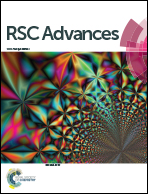Rotating electrode in electro membrane extraction: a new and efficient methodology to increase analyte mass transfer
Abstract
Introducing a new approach to a methodology is an interesting task and represents a hot topic in the field of sample preparation. This work is the first study to introduce rotating electrode electro membrane extraction (REEME) as an efficient and inexpensive method. In this new approach to EME, the acceptor phase (AP) was agitated using a rotating electrode that was connected to a modulated speed rotator. The aim of this set up was to enhance the extraction efficiency by increasing analyte mass transfer from supported liquid membrane (SLM) to the AP and reducing the thickness of the double-layer in the inner side of the SLM. Box–Behnken design and response surface methodology were applied to find optimal experimental conditions for the extraction of a few model basic drugs including verapamil, haloperidol, and rivastigmine. Under the optimized conditions (organic solvent in the SLM: 2-ethyl hexanol, stirring rate of AP: 64 rpm, stirring rate of sample solution: 1400 rpm, potential difference: 170 V, extraction time: 16 min, acceptor phase's pH: 2.0, and donor phase's pH: 5.0), limits of detection and quantification were in the ranges of 2.0–3.0 ng mL−1 and 6.0–10.0 ng mL−1, respectively. To understand the influence of agitation of the AP on extraction efficiency, a comparative study was carried out between conventional EME and REEME methods. The results showed that, the extraction efficiency of REEME was higher than that of EME. Finally, the proposed method was successfully applied to determine concentrations of model drugs in wastewater and urine samples.


 Please wait while we load your content...
Please wait while we load your content...